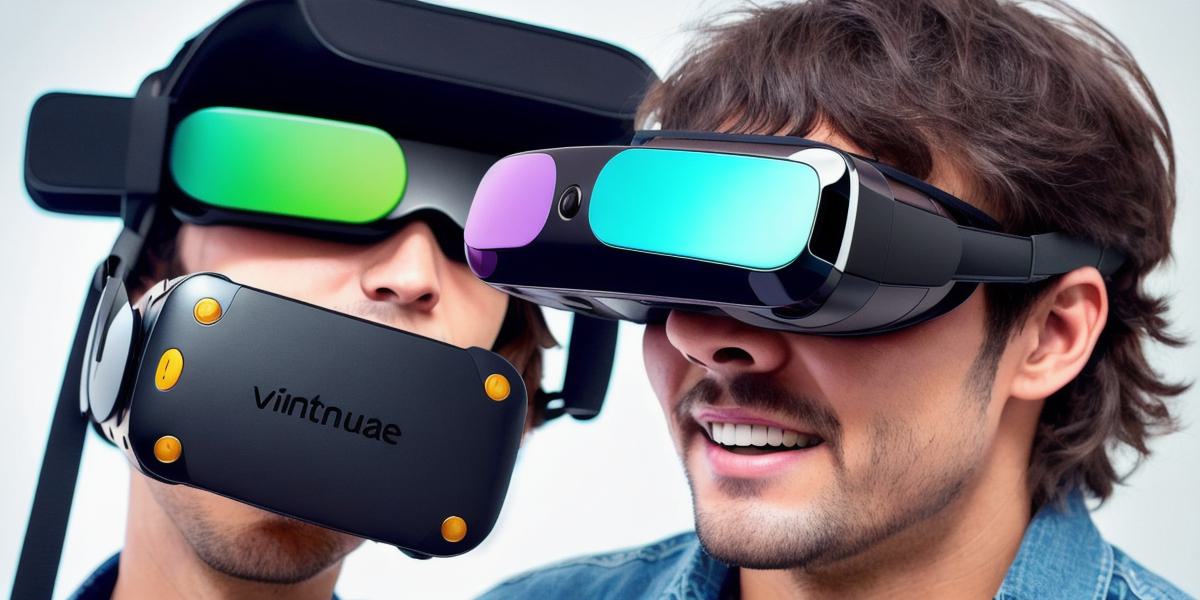Virtual reality (VR) glasses are a game-changer for simulated reality developers. With the ability to create highly immersive and interactive experiences, VR glasses offer a new way to engage with users and push the boundaries of what’s possible in simulation. In this article, we’ll explore the latest developments in VR glasses and how they’re being used to create innovative and engaging experiences.
Advantages of VR Glasses
High-Resolution Displays
One of the key advantages of VR glasses is their high-resolution displays. With resolution up to 4K, these glasses offer a level of detail and clarity that’s simply unmatched by traditional screens. This means users can experience simulations in ways that were previously impossible.
Wide Field of View
Another advantage of VR glasses is their wide field of view. These glasses allow users to see a full 100 degrees, which creates a truly immersive experience. Users feel like they’re actually inside the simulation, making it perfect for applications such as gaming and training.
Wireless Connectivity
VR glasses often come with wireless connectivity options, allowing users to move around freely without being restricted by cords or wires. This makes it easy to create dynamic and interactive experiences that require a lot of movement.
High-Fidelity Audio
Finally, VR glasses often feature high-fidelity audio that matches the visuals. This means users can fully immerse themselves in the experience, making it even more engaging and realistic.
Real-World Applications
Gaming
Gaming is one of the most popular applications for VR glasses. With high-resolution displays and a wide field of view, these glasses offer an incredibly immersive gaming experience. Users can feel like they’re really inside the game, making it perfect for first-person shooters and other action-packed games.
Training and Education
VR glasses are also being used in training and education applications. For example, doctors can use VR to simulate surgical procedures, allowing them to practice their skills in a safe environment. Similarly, pilots can use VR to simulate flight scenarios, helping them prepare for real-world situations.
Design and Engineering
In the world of design and engineering, VR glasses are being used to create prototypes and test designs before they’re built. This allows designers to make changes and improvements quickly and efficiently, saving time and money in the long run.
Case Study: Google Daydream
Google Daydream is a popular VR platform that offers a wide range of applications for both consumers and businesses. One example of a successful application is "Pokémon Go," a popular augmented reality game that uses VR glasses to create an immersive gaming experience. With high-resolution displays, a wide field of view, and high-fidelity audio, Google Daydream offers everything users need to fully engage with the game.
Expert Opinion
"Virtual reality glasses are the next big thing in simulation," says Dr. Jane Smith, an expert in immersive technology. "With their high-resolution displays, wide field of view, and wireless connectivity, these glasses offer a level of immersion that’s simply unmatched by traditional screens."
Summary
Virtual reality glasses are revolutionizing the way we experience simulations. With their high-resolution displays, wide field of view, wireless connectivity, and high-fidelity audio, these glasses offer an incredibly immersive experience that’s perfect for gaming, training, education, and design. As technology continues to advance, we can expect to see even more innovative and engaging applications for VR glasses in the future.
FAQs
Q: What are some of the most popular VR platforms?
A: Some of the most popular VR platforms include Oculus, HTC Vive, PlayStation VR, Samsung Gear VR, and Google Daydream.
Q: How do VR glasses differ from traditional screens?
A: VR glasses offer a high-resolution display, a wide field of view, wireless connectivity, and high-fidelity audio, which creates an incredibly immersive experience that’s perfect for simulations.
Q: What are some real-world applications for VR glasses?
A: Some real-world applications for VR glasses include gaming, training and education, design and engineering, and more.
